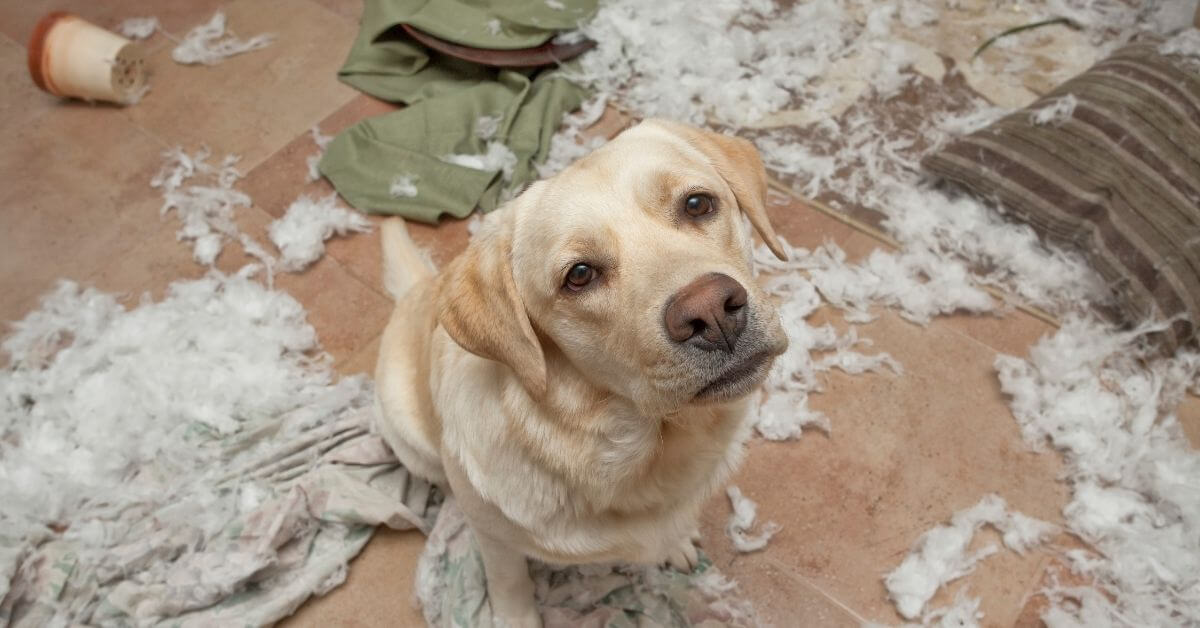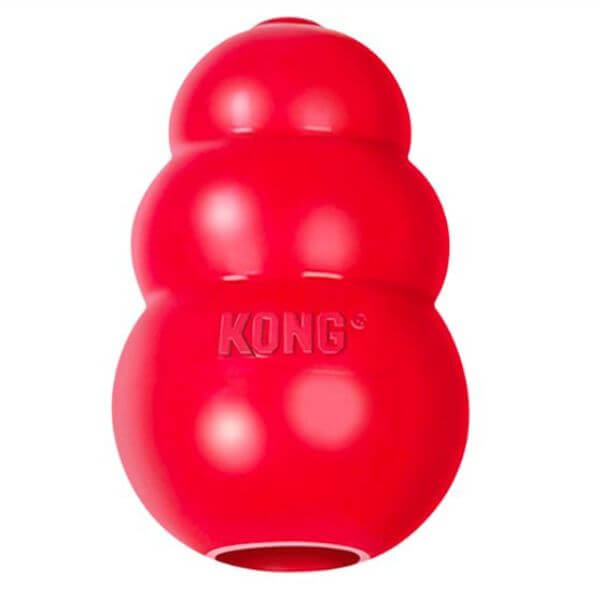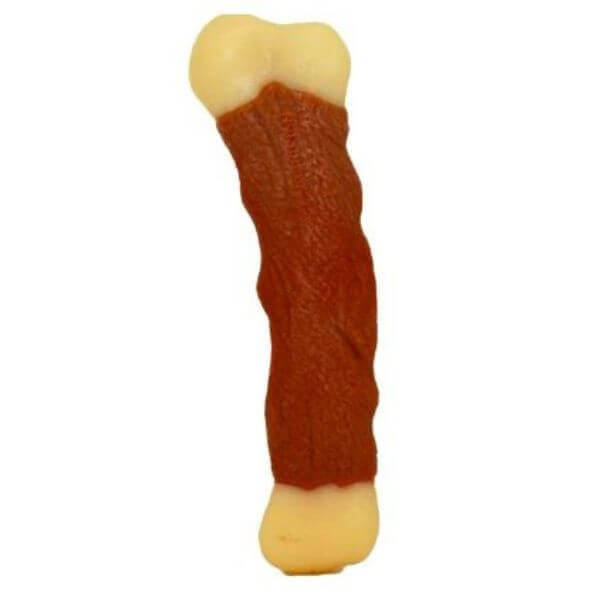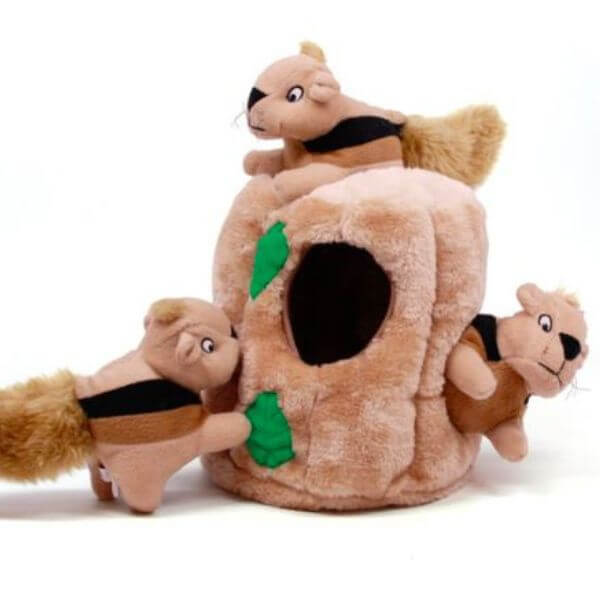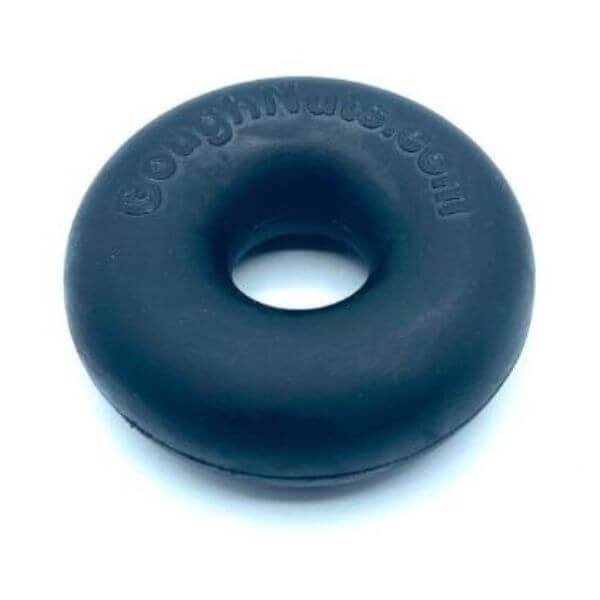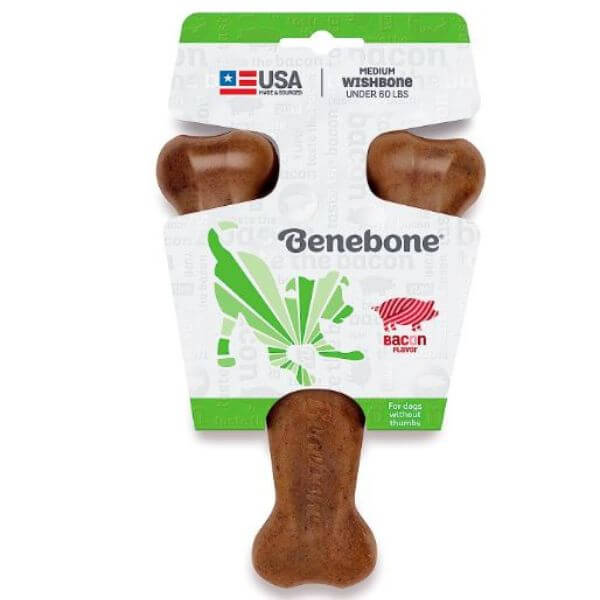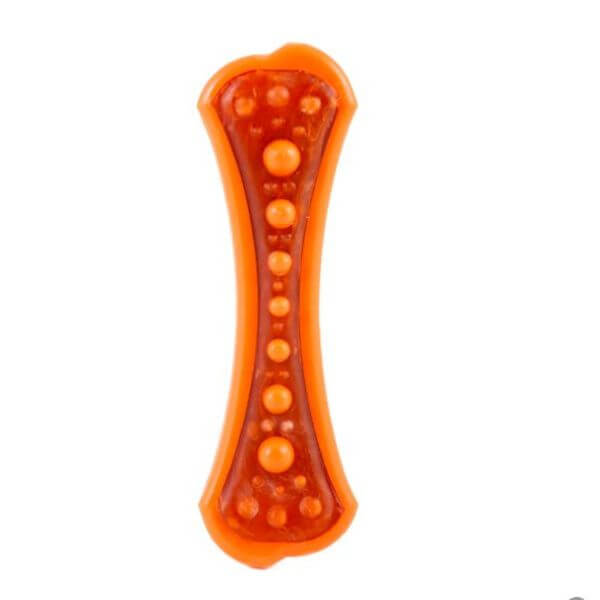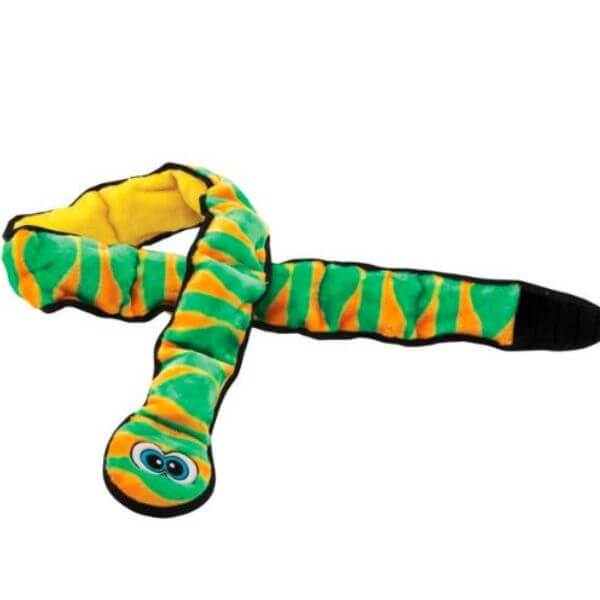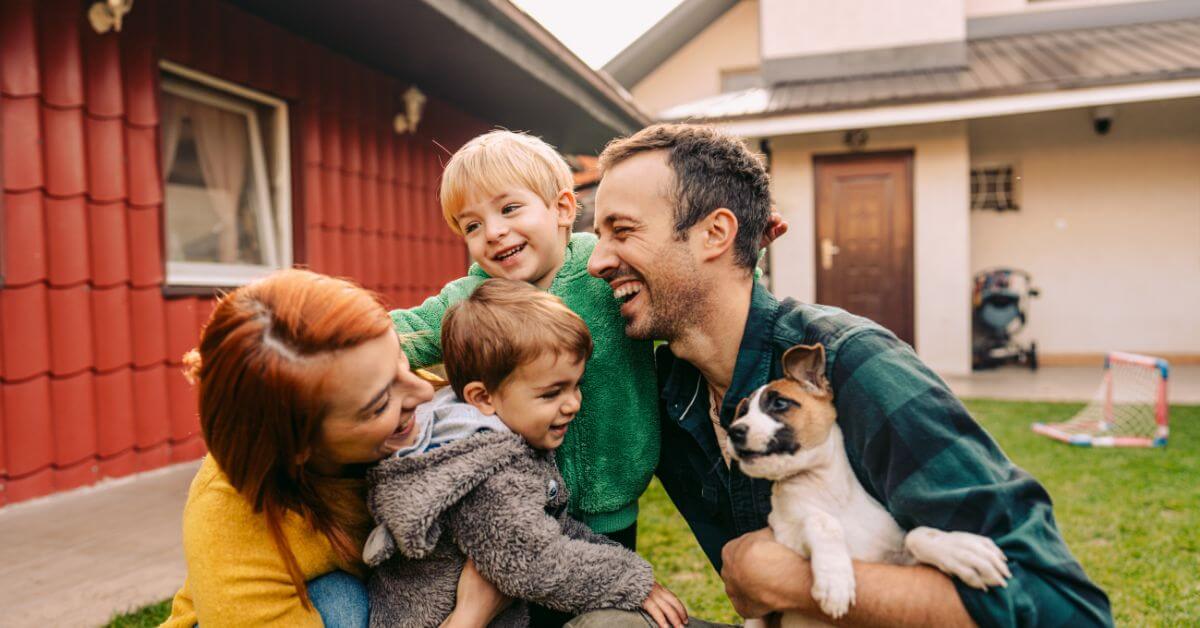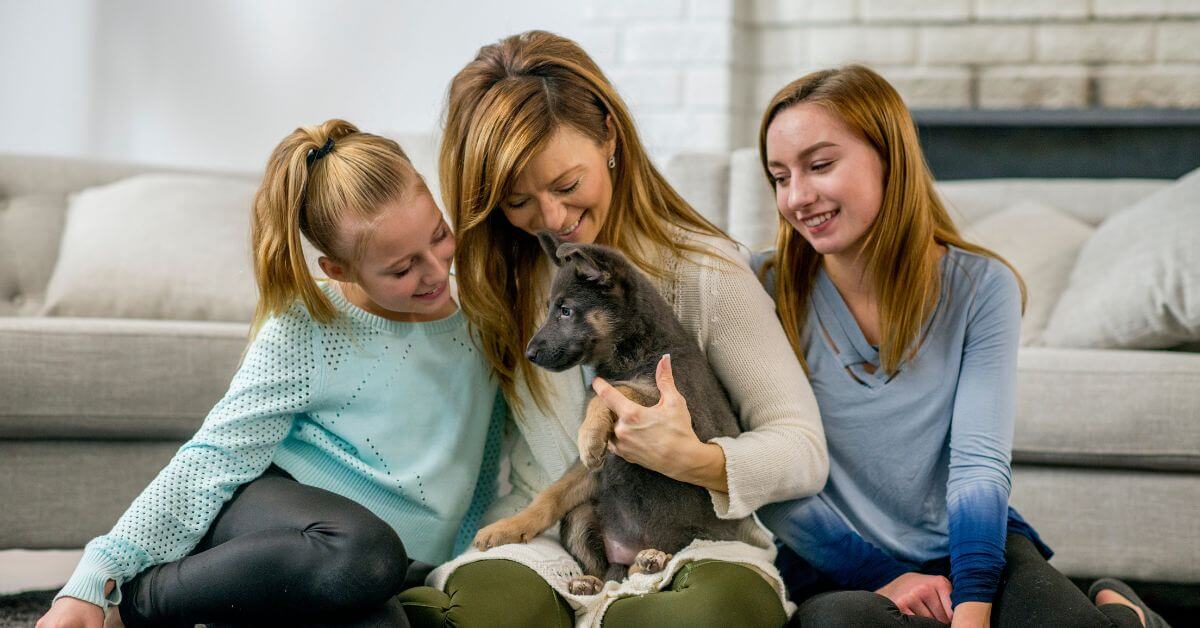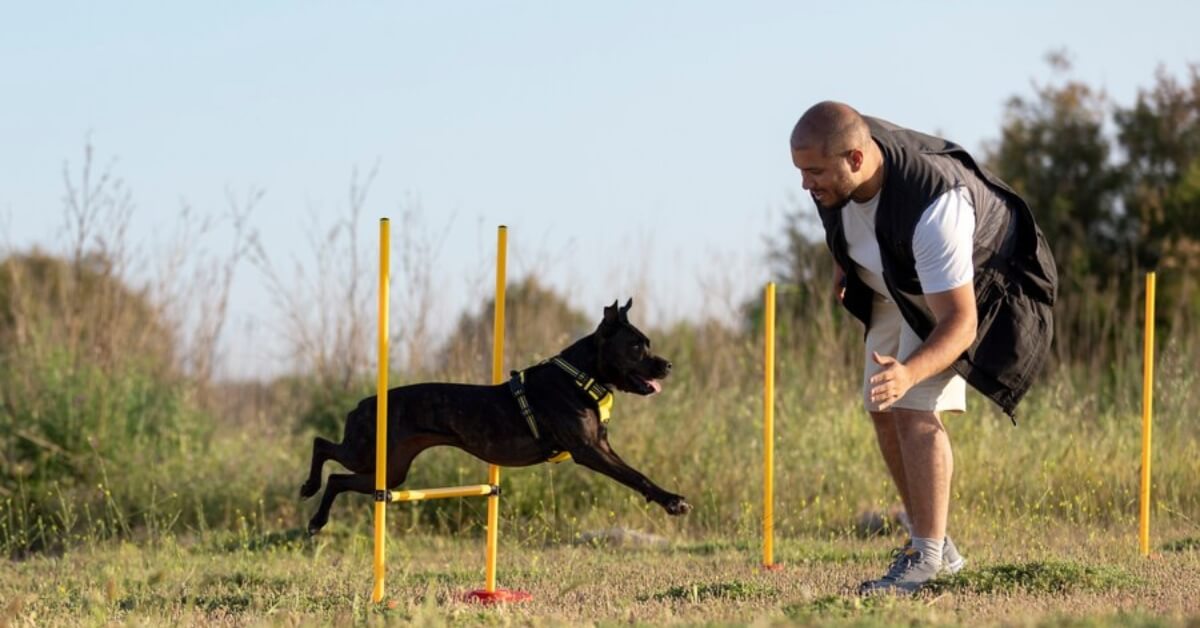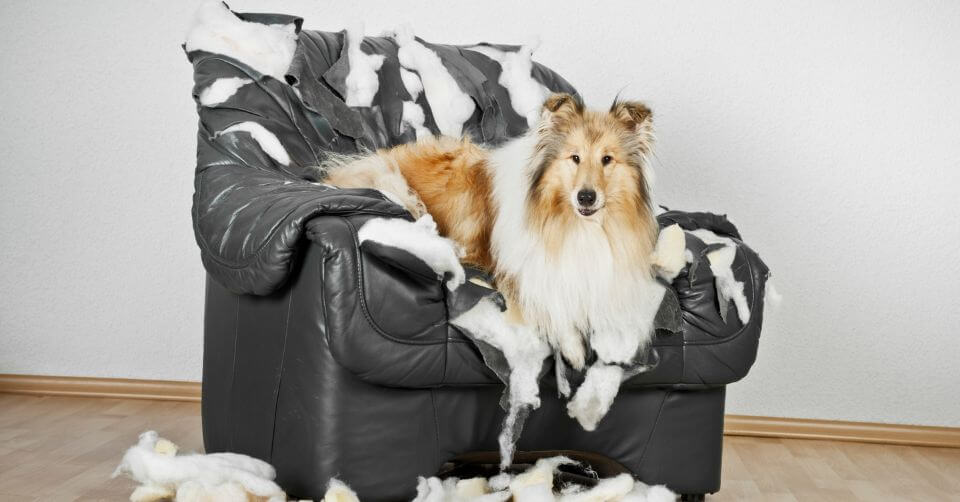
Understanding the Destructive Chewing Behaviour
-
Boredom and Lack of Exercise:
Dogs, particularly active breeds, require regular physical and mental stimulation. If these needs are not met, dogs may resort to destructive behaviors like chewing as a way to expend energy and alleviate boredom.
-
Separation Anxiety:
Dogs suffering from separation anxiety may exhibit destructive chewing when left alone. This is a result of their stress and anxiety, and chewing serves as a coping mechanism. Items that carry the owner’s scent are often the target.
-
Teething:
In puppies, excessive chewing can be attributed to the discomfort of teething. Puppies explore the world through their mouths, and when their gums are sore, they find relief in chewing.
-
Lack of Training:
If dogs aren’t taught what is acceptable to chew and what isn’t, they may end up chewing on anything they find interesting. This lack of training or inconsistent rules can lead to destructive chewing.
-
Attention-Seeking Behavior:
Some dogs may resort to destructive chewing as a way to get attention, even if it is negative attention. If a dog learns that chewing on a shoe brings immediate attention from its owner, it might continue this behavior as a means to engage its owner.
-
Underlying Medical Issues:
Sometimes, excessive chewing can be due to medical issues. For instance, nutritional deficiencies, gastrointestinal problems, or oral health issues can increase a dog’s desire to chew.
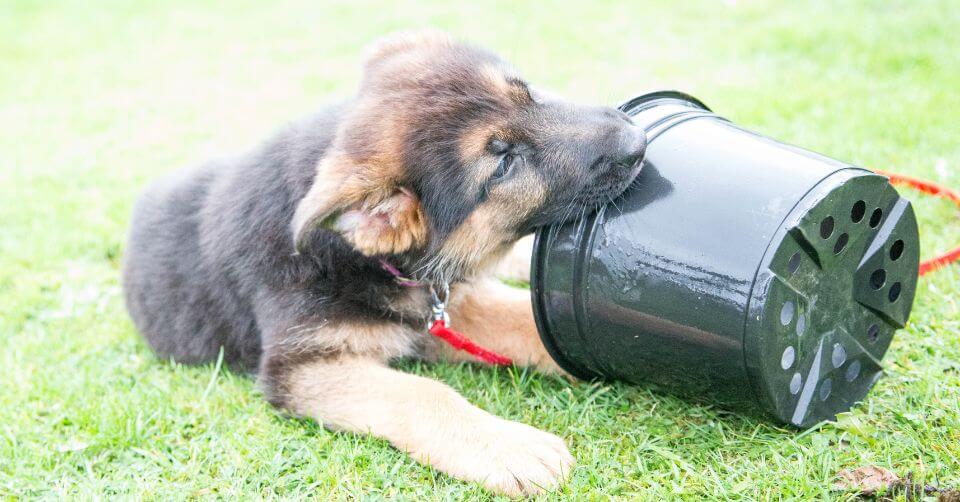
Signs of Destructive Chewing
-
Spotting the Evidence:
Torn shoes, damaged furniture, etc.The most obvious sign of destructive chewing is, of course, the wreckage left behind by your furry little destructor. Torn shoes, damaged furniture, bits of fabric, or even chunks of wood lying around are clear indicators that your dog’s been indulging their chewing instincts on the wrong items.
-
Behavioral Clues:
Excessive licking, seeming fixation on certain items
Apart from the physical signs of destruction, you might also notice some behavioral clues. Your dog might start showing an excessive interest in certain objects, often the ones they’re not supposed to chew on. They might be licking, sniffing, or pawing at these items, basically showing all the telltale signs of a dog about to engage in a chewiest.
You might also notice a sudden increase in the amount of time your dog spends chewing, or that your dog specifically goes for items when they’re bored or left alone. These are all behavioral clues pointing toward a destructive chewing habit.
-
Physical Signs:
Damage to dog’s teeth, the potential for ingested objectsIn some cases, the signs might be on the dog itself. For instance, damage to your dog’s teeth could indicate they’ve been chewing on items that are too hard for them, like certain furniture or stones. In rare cases, you might also notice signs of discomfort or distress if your dog has swallowed parts of the objects they’ve chewed, which could potentially lead to internal damage. In such scenarios, it’s crucial to take your dog to the vet for a check-up.
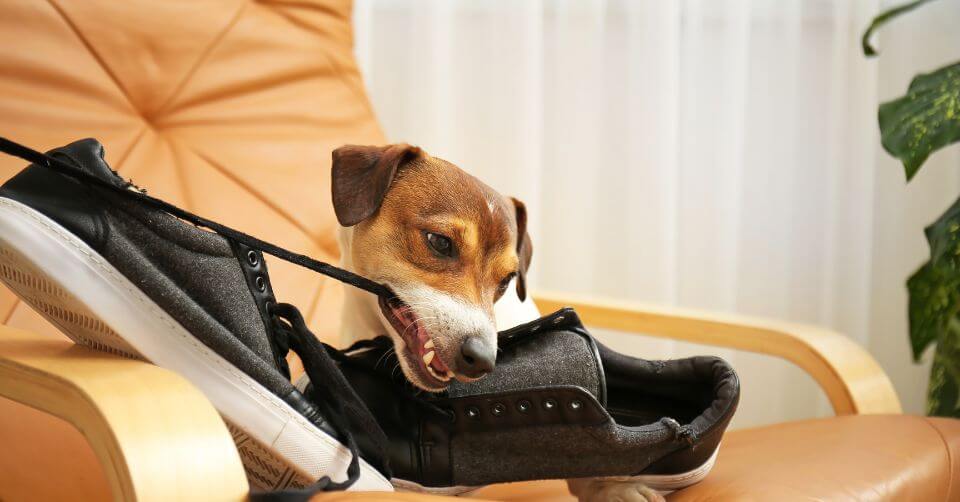
Triggers of the Destructive Chewing
-
Boredom or Lack of Exercise
Let’s start with the big one: boredom. You know that restless feeling you get when you’ve got nothing to do? Dogs get that too. And without a good book or TV series to dive into, they might turn to chew for entertainment.
Mental stimulation is a must for our canine companions. They need puzzles to solve, games to play, and new things to learn. If they’re not getting enough of this, they might resort to creating their fun, and chewing your stuff can become an interesting (for them, not for you) pastime.
Think about how you feel when you’ve got nothing to do. Pretty bored, right? Well, dogs are the same. When they don’t get enough physical exercise or mental stimulation, they start looking for ways to entertain themselves. And let’s be real, what’s more entertaining for a dog than turning your expensive running shoes into their chew toy? Regular walks, playtime, and mental stimulation like puzzle toys can go a long way in curbing this form of chewing.
-
Anxiety and Stress:
Just like humans, dogs too can experience anxiety and stress. These emotions can trigger destructive behavior like chewing as a way for them to self-soothe. It could be separation anxiety, fear of loud noises, or changes in their environment. If you notice your pooch chewing excessively during certain situations, it might be time to consult with a vet or a dog behaviorist.
-
Teething (for Puppies):
If you’ve got a puppy at home, brace yourself for the teething phase! As their new set of teeth starts to grow, puppies experience discomfort and have an instinctual need to chew. This is natural and essential for their dental health. However, it’s also the stage where they learn what they can and cannot chew. Providing safe and suitable chew toys can help guide them through this period without costing you your favorite furniture.
-
Nutritional Deficiencies or Hunger:
Did you ever imagine that your dog’s diet could be the culprit behind their chewing? If a dog isn’t getting enough nutrients from their food, they might resort to chewing and eating non-food items, a condition known as pica. Similarly, if their meals aren’t satisfying their hunger, they might start seeing your possessions as a tasty alternative. Always ensure that your pet is on a balanced diet and, if in doubt, seek advice from your vet.
-
Lack of Proper Chew Toys or Items:
Picture this: your dog feels the natural urge to chew but can’t find a suitable object. What happens next? They go for the next best thing, which sadly might be your cherished belongings. By providing appropriate chew toys, you’re not just saving your stuff but also keeping your dog safe from ingesting harmful substances.
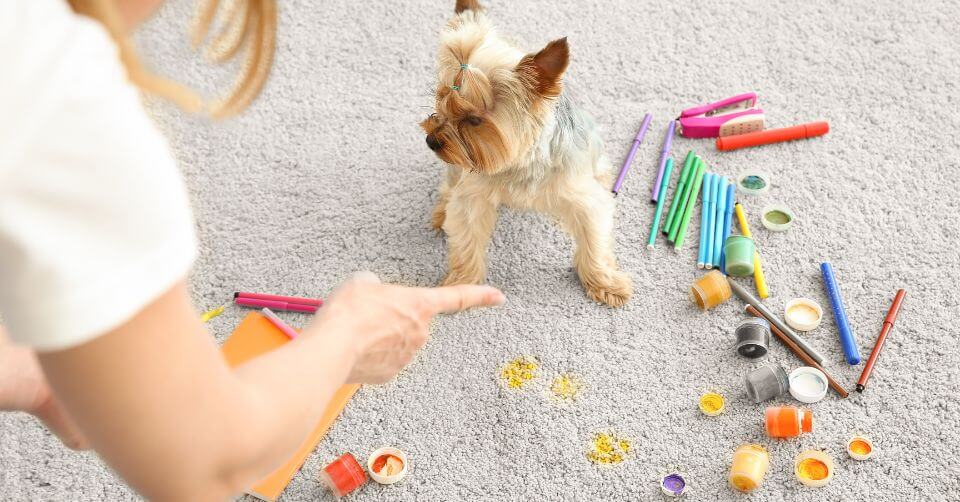
How to Handle Destructive Chewing – Do’s and Don’ts
Do’s
-
Provide Plenty of Exercise
Exercise isn’t just for keeping your dog’s weight in check; it also plays a pivotal role in preventing destructive behaviors. Regular physical activity helps burn off excess energy and reduces boredom, making your dog less likely to use your furniture as a chew toy. So, fetch that Frisbee, go for that extra-long walk, and make sure your furry friend gets plenty of exercise each day.
-
Offer Appropriate Chew Toys
Dogs need to chew – it’s an instinct. But it’s our job to ensure they chew on the right things. Invest in high-quality, durable chew toys designed for dogs. These will not only satisfy your dog’s need to chew but also keep them busy and prevent them from eyeing up your stuff.
-
Utilize Distraction and Redirection
Caught your dog mid-chew? Instead of losing your cool, use this as an opportunity to redirect their attention. Show them an approved chew toy or distract them with a game. This technique helps reinforce what they’re allowed to chew and what’s off-limits.
Consider Using a Taste Deterrent Spray
Sometimes, we need a little extra help. That’s where taste deterrent sprays come in. These harmless sprays leave a bitter taste on items, discouraging your dog from chewing them. They can be particularly handy when dealing with persistent chewers.
Don’ts
-
Avoid Punishment After-the-Fact
Found a chewed-up item but didn’t catch your dog in the act? Resist the urge to scold them. Dogs live in the moment and won’t associate the punishment with something they did earlier. Instead, focus on preventing future incidents by removing chewable items or using deterrents.
Don’t Use Old Shoes or Clothes as Chew Toys
It might seem like a good idea to hand over an old shoe to your chew-happy dog, but it can create confusion. Your dog doesn’t understand the difference between old and new shoes. To them, a shoe is a shoe. If they’re allowed to chew on one, they’ll think all are fair game.
Avoid Giving the Dog Attention for Unwanted Behaviour
If your dog gets attention (even if it’s negative) every time they chew something they shouldn’t, they might continue to do it for the spotlight. Instead, ignore the unwanted behavior and reward the good. Remember, positive reinforcement goes a long way.
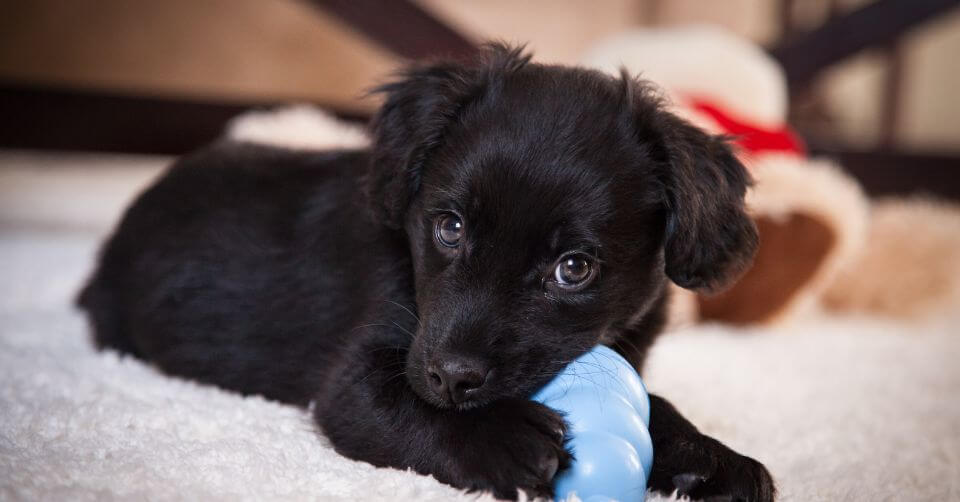
Recommended Products to Manage the Destructive Chewing Behavior in Dogs
Key Features
| Durable natural rubber formula stands up to strong jaws and persistent chewers. | |
| The hollow design allows for treat filling, making chew time more engaging. | |
| Bounces unpredictably, adding an element of physical play. | |
| Safe for dishwasher use, making it easy to clean. | |
| Comes in various sizes to cater to all breeds. | |
| Vet-recommended worldwide for its efficacy in curbing destructive chewing. |
Pros
| Highly durable design ensures it lasts long even with aggressive chewers. | |
| The treat-filling feature keeps dogs engaged for extended periods. | |
| Can also serve as an interactive play toy due to its unpredictable bounce. | |
| Easy to clean and maintain as it’s dishwasher safe. |
Cons
| The hollow design might pose a choking hazard if not appropriately sized for the dog. | Dogs may eventually lose interest if the same treats are used repeatedly. | Not suitable for dogs with dietary restrictions if used with treats. | May be too hard for dogs with dental issues. |
Key Features
| Durable nylon material for long-lasting use. | |
| Texture aids in dental hygiene by controlling plaque and tartar. | |
| Flavored to keep dogs interested in chewing. | |
| Discourages destructive chewing and promotes safe, healthy chewing habits. | |
| Available in a variety of sizes and shapes to suit different breeds. | |
| Veterinarian recommended as a safe and reliable chewing toy. |
Pros
| Helps maintain dental hygiene in dogs while providing a chewing outlet. | |
| Flavor-infused to keep dogs engaged. | |
| Durable and designed to withstand heavy chewers. | |
| Variety in sizes and shapes cater to different breeds and chewing styles. |
Cons
| Some dogs might not be attracted to the flavor. | |
| Sharp fragments may break off over time and could pose a choking hazard. | |
| The hard nylon could potentially harm a dog’s teeth. | |
| Not suitable for puppies with soft teeth. |
Key Features
| Plush, interactive puzzle game that challenges your dog mentally. | |
| Includes squeaky squirrels to entice and entertain your dog | |
| Squirrels can be replaced with treats for added incentive. | |
| The soft, plush material is gentler on the teeth than harder chew toys. | |
| Available in different sizes to suit various breeds. | |
| Promotes interactive play that can help reduce anxiety and boredom. |
Pros
| It’s not just a chew toy but also a mentally stimulating puzzle. | |
| Soft, plush material is gentle on your dog’s mouth. | |
| Squeaky squirrels attract dogs and keep them entertained. | |
| Versatile in its use – can be used with treats or without. |
Cons
| Not suitable for aggressive chewers as the material may not withstand heavy chewing. | |
| Squeaky toys may be annoying to some pet owners. | |
| Pieces can easily be torn off and swallowed, posing a choking hazard. | |
| Requires more cleaning due to the plush material. |
Key Features
| Made from virtually indestructible rubber compound, perfect for aggressive chewers. | |
| Ring design makes it versatile for fetch and chewing. | |
| Includes a safety indicator to show when the toy is unsafe and should be replaced. | |
| Floats in water, making it suitable for water play. | |
| Comes in two sizes to accommodate different dogs. | |
| Lifetime guarantee – if your dog chews through to the red layer, Goughnuts will replace the toy. |
Pros
| Extremely durable, designed specifically for the toughest chewers. | |
| The safety indicator provides a visual cue for toy replacement. | |
| Suitable for various types of play, including water games due to its buoyancy. | |
| Offers a lifetime guarantee, providing excellent value for money. |
Cons
| Due to its extreme durability, it might be too hard for dogs with dental issues. | |
| Some dogs may not find the ring design engaging. | |
| Lack of flavors or scents could make it less appealing to some dogs. | |
| Its high price point compared to other chew toys. |
Key Features
| Made with durable nylon for prolonged use. | |
| Infused with real flavors (bacon, chicken, or peanut) for added appeal. | |
| The unique wishbone shape allows dogs to grip the toy comfortably. | |
| Available in different sizes to cater to various breeds. | |
| The ridged design helps with teeth cleaning and gum massaging. | |
| Benebone donates a portion of their profits to animal welfare organizations. |
Pros
| The real flavors are highly attractive to dogs, keeping them engaged. | |
| The wishbone design provides a better grip and more chewable areas. | |
| Helps with dental hygiene due to its ridged design. | |
| Benebone’s commitment to animal welfare through their donation scheme is a major plus. |
Cons
| Flavor might eventually fade, reducing its appeal to the dog. | |
| Some dogs might not like the hard nylon material. | |
| Pieces can break off over time and pose a choking hazard. | |
| Not suitable for dogs with allergies to the flavors used. |
Key Features
| Made from proprietary Zogoflex material that is highly durable and safe for dogs. | |
| Bone shape appeals to the instincts of dogs. | |
| Floats in water, making it perfect for playing in pools or lakes. | |
| It’s also a bouncing toy, adding an extra element of fun. | |
| Dishwasher safe for easy cleaning. | |
| Comes with a one-time replacement guarantee. |
Pros
| Made with highly durable material that stands up to aggressive chewers. | |
| Versatile in use – suitable for chewing, bouncing, and floating. | |
| Easy to clean with dishwasher compatibility. | |
| The replacement guarantee provides peace of mind and value for money. |
Cons
| Flavor might eventually fade, reducing its appeal to the dog. | |
| Some dogs might not like the hard nylon material. | |
| Pieces can break off over time and pose a choking hazard. | |
| Not suitable for dogs with allergies to the flavors used. |
Key Features
| Combines a durable chew toy exterior with a tasty, edible interior. | |
| Designed for dogs of all sizes with a variety of chewing styles. | |
| Available in multiple sizes and flavors to suit your dog’s preference. | |
| Helps to reduce tartar and plaque. | |
| Contains a tasty middle filled with bacon flavor. | |
| Comes in fun bone shapes that dogs love. |
Pros
| Edible center provides extra motivation for chewing. | |
| Helps in promoting good dental health. | |
| Made with durable material for long-lasting use. | |
| Bacon flavor is enticing for most dogs. |
Cons
| Not suitable for very aggressive chewers as they may break it apart quickly. | |
| The edible part can be consumed quickly, leaving just the nylon bone. | |
| Some dogs may lose interest after the edible part is gone. | |
| Potential choking hazard if larger pieces are swallowed. |
Key Features
| Made from natural, high-bounce rubber. | |
| Compatible with Chuckit! Ball Launchers for long-distance fetch. | |
| Floats in water for versatile play. | |
| Easy to clean after outdoor play. | |
| Highly durable for strong chewers. | |
| Available in multiple sizes to fit your dog’s mouth. |
Pros
| Great for interactive play and exercise. | |
| Highly durable and can withstand heavy chewing. | |
| Perfect for water play as it floats. | |
| Can be used with launchers for extended play and less strain on the owner’s arm. |
Cons
| It’s not a typical chew toy and may not satisfy the need to chew as much as other toys. | |
| Some dogs might be able to tear it apart. | |
| Can be a choking hazard for large dogs if the smaller size is chosen. | |
| Lacks flavor infusion, which some dogs prefer. |
Key Features
| Made from natural, high-bounce rubber. | |
| Compatible with Chuckit! Ball Launchers for long-distance fetch. | |
| Floats in water for versatile play. | |
| Easy to clean after outdoor play. | |
| Highly durable for strong chewers. | |
| Available in multiple sizes to fit your dog’s mouth. |
Pros
| Multiple squeakers increase the fun and interest level. | |
| No stuffing means less mess to clean up. | |
| Durable for a plush toy, can withstand some degree of chewing. | |
| Can help to reduce boredom and destructive behavior. |
Cons
| Not as durable as some rubber or nylon chew toys. | |
| Some dogs may manage to rip it apart, posing a potential choking hazard. | |
| Not suitable for extremely aggressive chewers. | |
| The squeakers can be quite loud, which may be an issue in some households. |
Key Features
| Designed with dental ridges to clean teeth and gums. | |
| Infused with baking soda for fresh breath. | |
| Made from durable rubber for aggressive chewers. | |
| Shaped like a fun gorilla to pique your dog’s interest. | |
| Comes in two sizes: small and large. | |
| Promotes better dental health. |
Pros
| Durable design, great for heavy chewers. | |
| Promotes dental health and freshens breath. | |
| Fun gorilla shape entices dogs. | |
| Can withstand heavy chewing, making it last longer. |
Cons
| Some dogs might not like the taste of baking soda.. | |
| The ridges may be too hard for some dogs, leading to potential tooth damage. | |
| Lacks flavor infusion, which some dogs prefer. | |
| Might be too large for smaller breeds. |
Conclusion
Recap of Key Strategies for Managing Destructive Chewing
Let’s do a quick sit-and-stay with the key strategies we’ve discussed:-
Understand the Triggers:
Boredom, anxiety, teething, nutritional deficiencies, or the lack of proper chew toys. Understanding the ‘why’ behind the chewing is the first step in addressing the issue.
-
Implement Do’s and Don’ts:
Exercise, appropriate chew toys, distraction, and redirection tactics, along with deterrent sprays, can all help. Remember to avoid post-incident punishment, confusion (by offering old shoes as toys), and attention for unwanted behavior.
-
Use the Right Products:
Depending on your dog’s needs, chew toys, deterrent sprays, anxiety-reducing products, or nutritional supplements could be your best friends in this journey.
Final Thoughts on the Importance of Patience and Consistency in Training
As we wrap up, let me leave you with this thought – patience and consistency are your strongest allies in this journey. Training a dog isn’t a one-day job; it’s an ongoing process. So even on those tough days when your favorite shoes become a casualty, remember that you’re not alone and that this phase will pass.
It’s crucial to approach each step with understanding and empathy toward your furry friend. After all, destructive chewing isn’t a ‘bad’ behavior from their perspective; it’s simply a way for them to communicate their needs or cope with certain situations.
And remember, every chewed-up shoe or piece of furniture is a stepping stone towards a better understanding of your dog. In this journey together, you’re not just training them; they’re teaching you about patience, unconditional love, and the value of a good pair of chew-proof slippers!
Frequently Asked Questions (FAQs)
What if my dog continues to chew destructively despite my best efforts?
Can destructive chewing be a sign of a medical problem?
While most destructive chewing is behaviour-based, certain medical conditions could increase your dog’s desire to chew. If you suspect this might be the case, it’s always best to consult with your vet.
